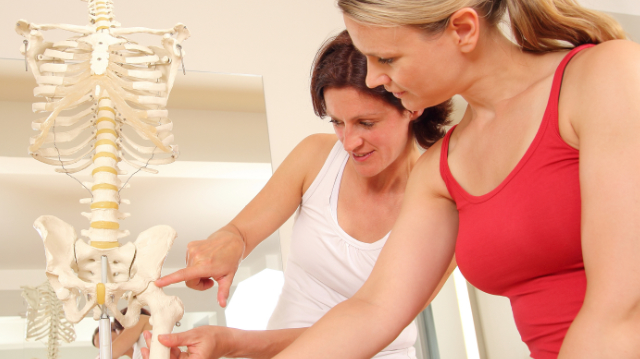


The hip is one of the most versatile and important joints in the body. It’s extremely powerful due to its robust architecture, which also provides it with impressive stability. But the hip joint is also incredibly flexible, allowing for a massive range of motion that is second only to the shoulder in this capacity.
The hip connects the lower extremities to the trunk of the upper body, and its primary function is to bear the body’s weight during both static (eg, standing) and dynamic (eg, walking and running) postures. Bones, cartilage, muscles, ligaments, tendons, and other structures all work together to allow this to occur.
Bones and cartilage
The hip is a ball-and-socket joint—the largest in the body—that is comprised of the head of the femur and the acetabulum.
Muscles
Large, thick muscles of the buttocks and thighs surround the hip and are responsible for the significant amount of power that the joint can generate. These muscles are typically classified into four groups—the gluteal group, adductor group, iliopsoas group, and lateral rotator group—based on which directions they permit movement in. The complex anatomy of the hip gives it the ability for three distinct types of movement:
Ligaments and tendons
The bones and muscles of the hip are all connected by a number of ligaments and tendons that further reinforce the joint’s strength while also preventing each structure from moving too far in any direction. The iliofemoral ligament is the strongest in the body and it prevents excessive adduction and internal rotation, while the pubofemoral ligament restricts abduction and the ischiofemoral ligament prevents internal rotation.
Synovial fluid
Lastly, a synovial membrane encapsulates the entire hip joint, which produces synovial fluid that lubricates and circulates nutrients to the hip. This fluid is stored in the cartilage while at rest but is squeezed out when the hip rotates or bears weight so that it moves more smoothly. As a result, it’s necessary to move the hip frequently to keep it healthy and lubricated.
These structures collectively help to keep the hip strong, stable, and flexible, but as we’ll explore in our next newsletter, problems can occur when any of these components break down or fail to properly perform its function.